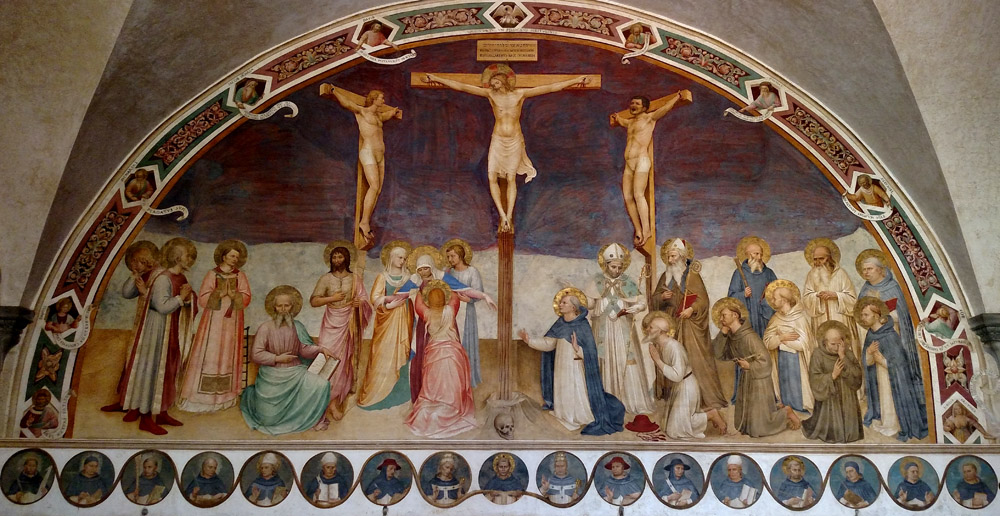Fra Angelico, The Crucifixion

1441-43
Fresco, 216.6 x 374 in. (550 x 950 cm.)
Convent of San Marco, Florence
Jesus is pictured as in most 15th-century Crucifixion images, his eyes closed in death and the weight of his body making his arms sag. As in Bridget of Sweden's vision, his two feet are held by a single nail, he wears a tied-up cloth, and his mother is about to faint. An even more ancient tradition is the skull on a hillock at the base of the cross, a visual pun on Calvary, "the place of the skull." In this enormous fresco the artist was able to include on the plaque the full text ordered by Pilate.
But the fresco's most remarkable feature is the arching border. A repeated theme in the gospels is that Christ's death and resurrection were foretold by the prophets. Accordingly, the artist sets into the border portraits of eight Old Testament prophets and patriarchs, two Gentiles said to have sensed that something was to happen, and the pelican that had become conventional atop the crucifix. Each of these holds a banderole with a quotation addressing Christ's death and resurrection that would be familiar to the friars from the breviary and the missal. Each of the following links will take you to an explanation of the person pictured, the phrase on the banderole, its provenance, a translation, and how it applies to the Crucifixion. Left to right on the border, the insets are:
Along the bottom border are St. Dominic (directly below the cross) and sixteen Dominican saints and blesseds. The main scene features a group of saints important to the Medici family on the left and on the right a group with three of the "Doctors of the Church" and men representing the major religious orders of the day. The figures are (left to right, with links to our essays on their iconography):
The two thieves are starkly distinguished. The one on Jesus' right is young, handsome, and blond. He gazes calmly on his savior. The other thief, with messy black hair, squints into the distance and howls in agony.
View this image in full resolution
Read more about the Crucifixion.
Photographed at the site by Richard Stracke, shared under Attribution-NonCommercial-ShareAlike license.
The convent's label for this fresco was an invaluable help in identifying saints and others who did not have attributes.